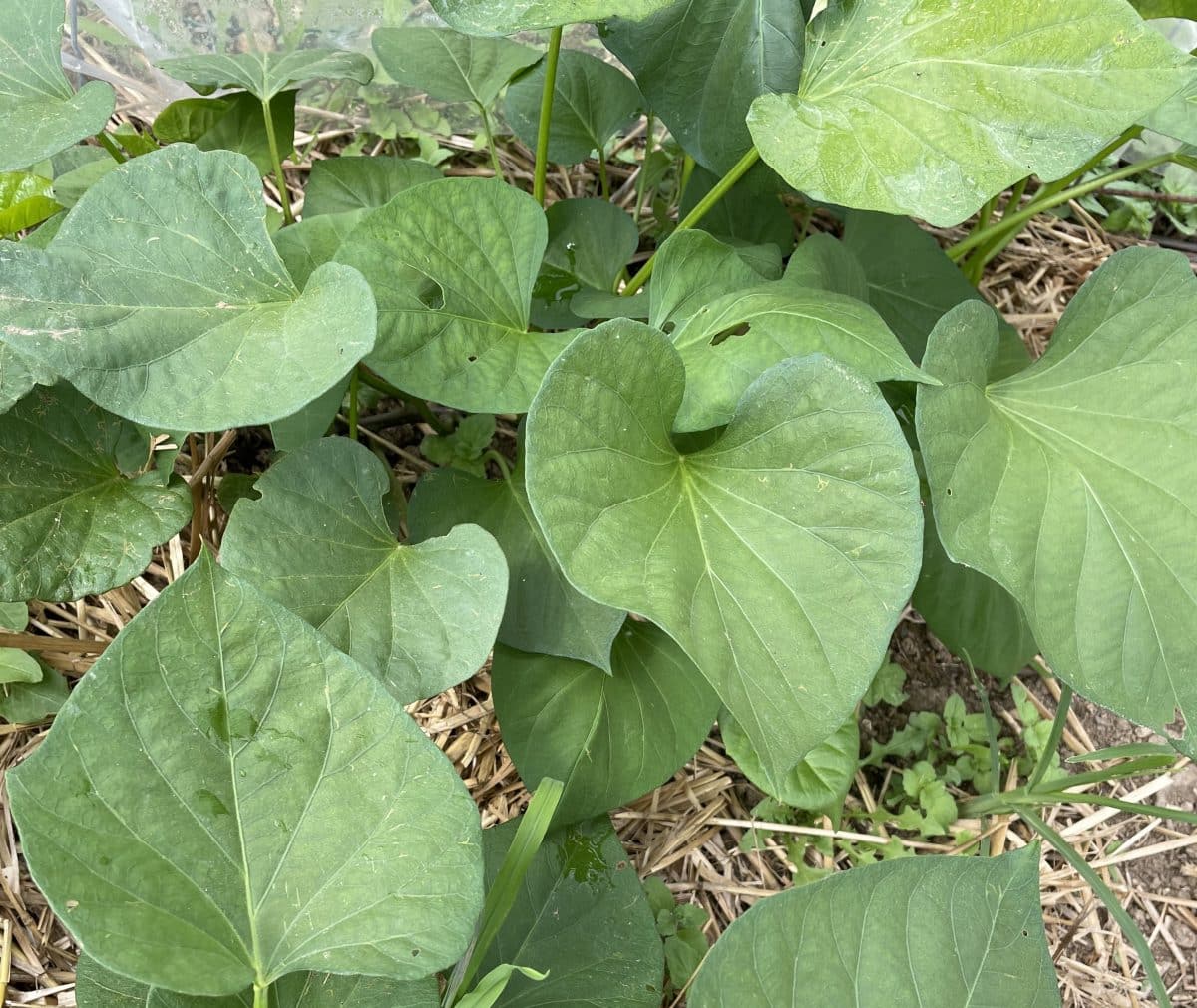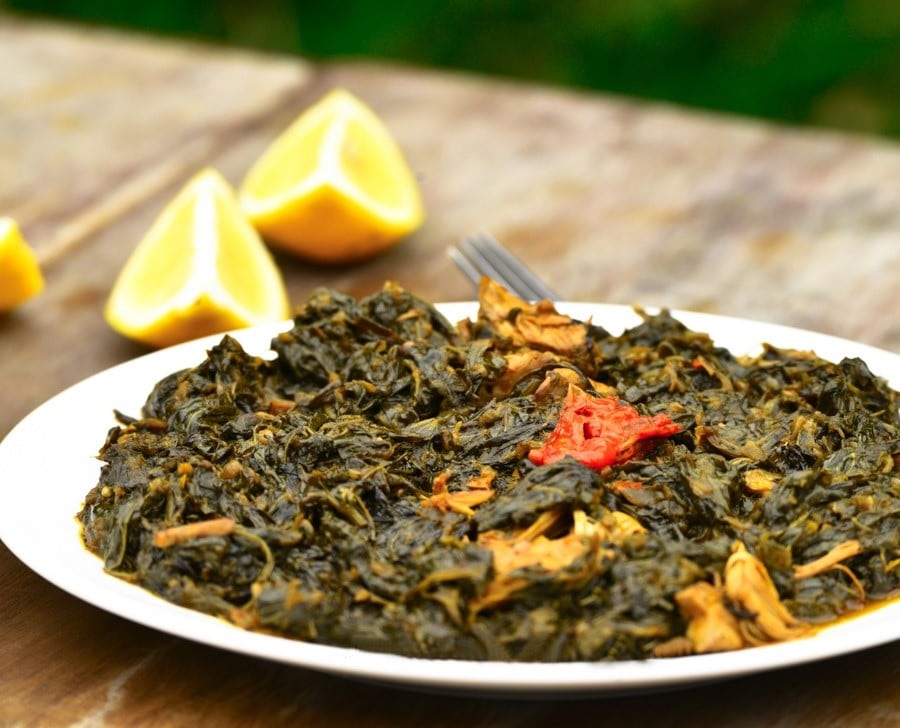A life in the Congo grew, in part, from sweet potato leaves.
I knew from the aroma that I’d like this dish, but I honestly never thought that it would be as good as it actually was.
My expat cooking adventures began thirty years ago when I left my life in Beirut and moved to Congo to be with my husband, who ran a business in Kinshasa. It wasn’t an easy decision. It meant leaving home, family and friends for a new life in another country. The first few months I dealt with homesickness where I longed for everything that was familiar, but that gradually faded as I started to adapt and settle into my new community.

Located in central Africa, the Democratic Republic of Congo (DRC) is the second largest country in the continent, with a population of 95 million inhabitants. The capital, Kinshasa, is located on the Congo river, and has a tropical climate. Like any big city, it has modernity on many levels, including fancy hotels, restaurants and coffeeshops, local and international bilingual schools, universities, academies of fine art, hospitals and a health care system. Congolese are generally friendly and hospitable by nature. The fact that I spoke no French back then, which is the official language in Congo, was an immediate shortcoming that put me in embarrassing situations; there was no doubt I had to learn the language to be able to communicate and enhance my stay experience.
Six months later I was able to speak a bit and quickly gained Congolese friends from all over the world. A few years later when I had the first of our three children I finally started to feel at home.
Before marriage I had no interest in cooking – literally, I couldn’t fry an egg. Once I was married I depended on a Lebanese restaurant that was located one short block from our house. But there came a moment when I asked myself: would I continue my whole life counting on takeaways? Certainly not, so out of necessity I began to collect recipes, and realized that in addition to a growing interest in food, I had a talent for cooking and baking.
Most locals in Congo live on cassava leaves, sweet potato leaves, rice, potatoes, bananas, beans, yams, fish, chicken, meat, groundnuts and various tropical fruits including bananas, mangoes, pineapples, papayas, passionfruit and more; expats enjoy the fact that veggies and fruits are organic by nature and meat is grass-fed. Congo has innumerable national dishes, stews and street foods that are wonderfully aromatic.
Marion’s sweet potato leaf stew: Matembele
Living in a new country is a scholastic experience on many levels: food, culture and places. It took a move to Congo for me to learn that sweet potato leaves are edible. One day we were invited over for dinner at the home of Marion, a gracious Congolese woman who is known in her community as a highly skilled cook.
The food came to us around a table covered end-to-end with impressive Congolese dishes, but the real star of the show was the sweet potato leaf stew, known in Congo as matembele.

I knew from the aroma that I’d like this dish, but I honestly never thought that it would be as good as it actually was. We ate each bite slowly so the experience would last as long as possible.
After dinner I asked Marion if she’d mind sharing the recipe and a smile lit up her face. She said, “What could be a better compliment? But I cook in the way my mother taught me, so I just throw in a little of this and a little of that.” But a few days later, she guided me to the “Grand Marché,” the largest open-air local market for fresh produce in Kinshasa, to purchase the ingredients needed for the dish. We spent a few hours in her kitchen, the house filled with a steamy aroma coming from the big pot of leafy chicken stew. Marion explained that there are many ways to make matembele, but ingredients usually include sweet potato leaves, onions, sometimes eggplant, and African hot red pepper known as pili pili. It requires time to make, but the effort is worth it.
Every cook in Congo has their approach to making matembele. It is common practice to make the sweet potato leaf stew with fried fish instead of boiled chicken. Any meaty or dense texture fish, like capitaine or perch, would do the job perfectly. A few other variations:
- Garlic can be added while sauteing the onions.
- A large peeled and diced eggplant can be added to the stew while simmering.
- A handful of diced celery can be added to deepen the flavor notes.
- You can add more pili pili or hot red habanero to provide more heat.
- In Congo, bouillon cubes or the equivalent are heavily used in stews, you can play around and add the amount to your taste.
I have made matembele often over the past thirty years. I always get requests from friends to make it for gatherings or dinner parties. It amazes me how often accidental events like who we meet and where we live can result in a recipe being acquired and becoming firmly rooted in one’s repertoire.
When it comes to Congolese cuisine, matembele is among favorite stews, an undiscovered treasure waiting to be found. ![]()
![]()
